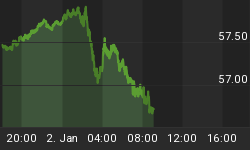Government bonds have been trading sideways since the middle of last year as market participants wax and wane about the prospects of the nascent economy recovery. Also, it has not quite been the one-way traffic for yields many pundits have been forecasting as seen from the US Treasury being able to sell paper across the yield curve at lower-than-expected yields.
Not subscribing to a meaningful economic recovery under his "new normal" scenario, Bill Gross, the manager of the world's largest bond fund, last month increased the exposure of the Pimco Total Return Fund to US government debt to 35% from 31% - the first increase since October 2009. Interestingly, $409 billion from a total inflow of $507 billion into US mutual funds over the past year ended up in bond funds.
The chart below, courtesy of the latest Commitment of Traders report (via David Rosenberg, chief economist and strategist of Gluskin Sheff & Associates), shows the net speculative short position in 30-year US Treasury Bonds. The net short position last week was 107,382 contracts (with a face value of $100,000 per contract). This is at the high end of the range and, according to Rosenberg, "perhaps explains why bonds refuse to sell off - anyone who can sell them already has." He added: "What is truly striking is that even though Treasuries were among the best-performing asset classes of the past decade, the noncommercial accounts spent 80% of that time being short the bond market. Yikes!"

Source: Gluskin Sheff & Associates - Breakfast with Dave, March 18, 2010.
Turning to technical analysis, the short-term picture for the ten-year Treasury Note yield is undecided, showing a symmetrical triangle. However, monthly data, going back to 1998, conveys an important message when considering the two momentum-type oscillators (ROC and MACD) at the bottom of the chart below. The ROC reversed course (crossing the zero line) in October last year for the first time since a buy signal was given at the beginning of 2007, thereby flashing a primary sell signal. The MACD provided a similar indication in June 2009.

Source: StockCharts.com
Lastly, while on the topic of long-term data, actually all the way back to 1850, the graph below featured in a recent report by Pring Turner Capital Group asking: "Are you prepared for a secular bear market in bonds? Bond owners beware". As shown, the yield is just below its secular down trendline and it would not take a large move in yields to mark the end of the almost 30-year secular decline. What will this do to the US's debt burden, the economic recovery and stock market valuations?

Source: Pring Turner Capital Group
Did you enjoy this post? If so, click here to subscribe to updates to Investment Postcards from Cape Town by e-mail.
















